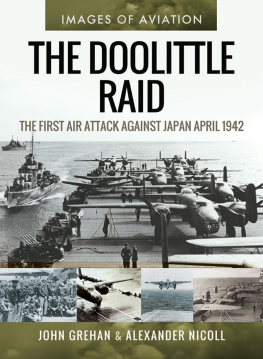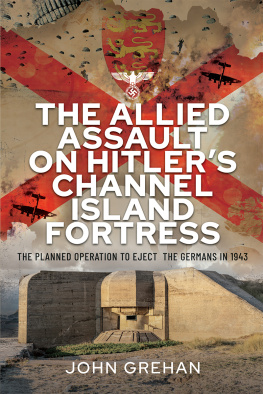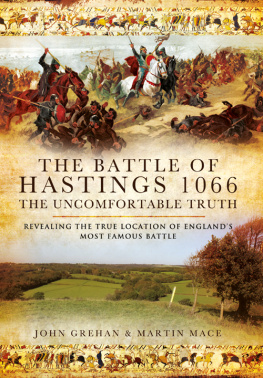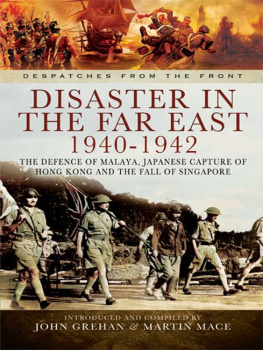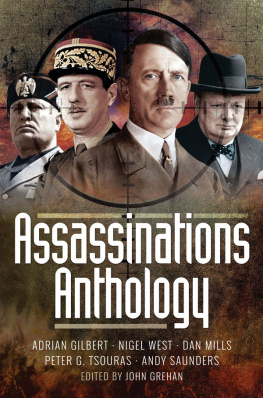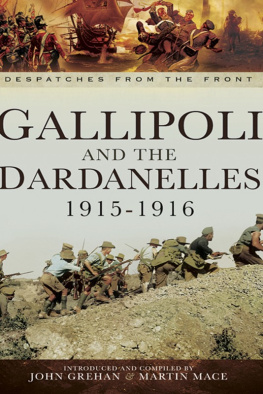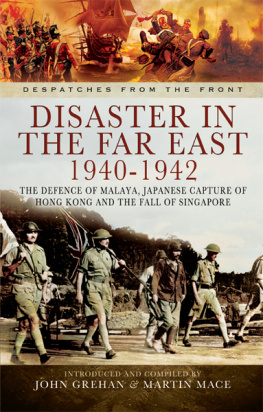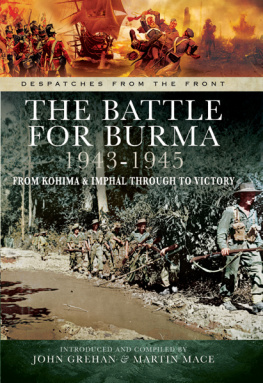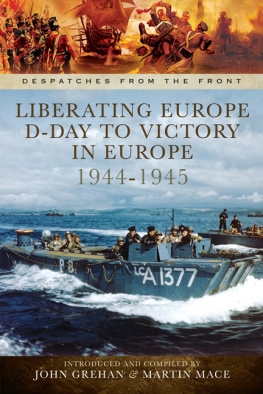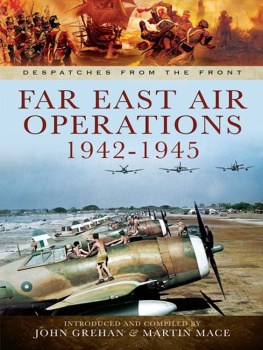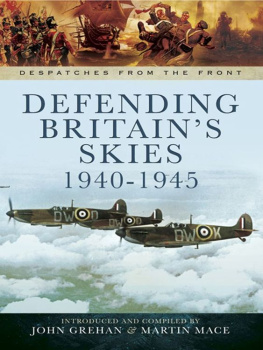First published in Great Britain in 2014 by
Pen & Sword Aviation
an imprint of
Pen & Sword Books Ltd
47 Church Street
Barnsley
South Yorkshire
S70 2AS
Copyright Martin Mace and John Grehan, 2014
ISBN 978 1 78346 207 0
eISBN 9781473838758
The right of Martin Mace and John Grehan to be identified as Authors of this Work has been asserted by them in accordance with the Copyright, Designs and Patents Act 1988.
A CIP catalogue record for this book is available from the British Library.
All rights reserved. No part of this book may be reproduced or transmitted in any form or by any means, electronic or mechanical including photocopying, recording or by any information storage and retrieval system, without permission from the Publisher in writing.
Printed and bound in England
By CPI Group (UK) Ltd, Croydon, CR0 4YY
Pen & Sword Books Ltd incorporates the Imprints of
Pen & Sword Aviation, Pen & Sword Family History,
Pen & Sword Maritime, Pen & Sword Military, Pen & Sword Discovery,
Pen & Sword Politics, Pen & Sword Atlas, Pen & Sword Archaeology,
Wharncliffe Local History, Wharncliffe True Crime, Wharncliffe Transport,
Pen & Sword Select, Pen & Sword Military Classics, Leo Cooper,
The Praetorian Press, Claymore Press, Remember When,
Seaforth Publishing and Frontline Publishing.
For a complete list of Pen & Sword titles please contact:
PEN & SWORD BOOKS LIMITED
47 Church Street, Barnsley, South Yorkshire, S70 2AS, England
E-mail: enquiries@pen-and-sword.co.uk
Website: www.pen-and-sword.co.uk
I NTRODUCTION
The report by Sir Hugh Dowding on the Battle of Britain is the first of just three official despatches on the aerial defence of the United Kingdom during the Second World War. So significant had the Battle of Britain been seen at the time, and so ingrained had it become in the public psyche as symbolic of Britains David and Goliath struggle against the might of Germany, it was a topic that had already been the subject of popular books before Dowdings despatch had been published. His despatch, he therefore concedes, would not offer anything particularly new or revealing to the reader, and would only be of historical interest. Dowding does himself an injustice in these remarks, as his report is full of detailed and careful analysis.
In his initial comments on the Battle of Britain, Dowding writes that the underlying object of the Luftwaffe was to bring Fighter Command continuously to battle, and to weaken its material resources and Intelligence facilities. Exactly when these operations began, and when they ended are far from certain dates, as Dowding points out. It is Dowding himself that chose 10 July as the start of the battle, a date which is now generally accepted, though he states that this is somewhat arbitrary as earlier attacks on convoys, which drew Fighter Command into action against the Luftwaffe , were all part of that process of weakening Britains defensive fighter force.
That weakening of this force was something that Dowding had to fight to preserve during the Battle of France. Much of his despatch explains why he was so opposed to sending his squadrons into France. I saw my resources slipping away like sand in an hour-glass, he wrote. Dowding was so anxious about the loss of hundreds of aircraft and pilots in France that he sought, and was granted, a personal interview with the War Cabinet. As is well-known, Dowdings arguments won the Cabinet over, despite the desperate appeals of the French for help. I know what it must have cost the Cabinet to reach this decision, admitted Dowding, but I am profoundly convinced that this was one of the great turning points of the war.
Dowding also gives considerable credit to the guns of the Air Defence System. He points out that on some nights as many as sixty per cent of the raiders approaching London from the south turned back after dropping their bombs in the open country or on the fringe of the Barrage.
Dowding provides a detailed explanation of how the Chain Home radar system worked and the methods by which the incoming aircraft were tracked and engaged. Interestingly, in this regard, the code word for height given to his fighters was Angels. After this had been in use for some time, Dowding suspected that the Germans had worked out what this meant. He, therefore, introduced a false quantity into the code signal. Thus Angels 18 no longer meant a height of 18,000 feet, but 21,000 feet. On more than one occasion German fighters were pounced upon from above because of this clever change.
Dowding refrains from providing a day by day, blow by blow account of the Battle of Britain, preferring to explain in general terms the methods adopted to defeat the Luftwaffe . These methods are fully explained in the kind of depth not normally provided in general histories of the Battle of Britain.
An understanding of the nature of the fighting in the Battle of Britain can only be gained through an appreciation of the various aircraft types and their capabilities, and this is provided by Dowding. In this regard it is interesting to note that he makes a point of challenging the stated top speed of the Hawker Hurricane. Its given maximum speed is generally declared to be around 335-340 mph, which Dowding says is over-rated. I carried out a series of trials to obtain the absolute and comparative speeds of Hurricanes and Spitfires at optimum heights, he wrote. Naturally the speeds of individual aircraft varied slightly, but the average speed of six Hurricanes came out at about 305 m.p.h.
He accepts that claims of enemy losses, which after the war were found to be highly inflated, were inaccurate but he believed that, at the time, they were an honest approximation. By comparison, German claims, he says, were ludicrous and that they know they were lying!
Regardless of such opinions, Fighter Command won the Battle of Britain and the main reason for this, according to Dowding, was because if a German aircraft was brought down over Britain, those of its crew that were not killed were captured, whereas if a British machine was shot down and the pilot was not killed or badly wounded, he could return to his squadron and be back in the air by the time his squadron was scrambled again.
Though the general policy adopted in the publication of the Second World War despatches was that appendices would not be included in the published accounts, a number of Dowdings appendices were in fact retained and printed in The London Gazette . Why some were omitted and some included is not clear.
The second despatch in this compilation is that from General Sir Frederick A. Pile who was the General Officer Commanding-in-Chief, Anti-Aircraft Command, and covers the entire period of the war from 1939 to 1945.
Dowding, as we have noted, attributed his victory in the Battle of Britain to an undeniable logic, that, as the Germans were operating over enemy territory they were bound to lose more pilots than Fighter Command which was fighting on its own turf. Pile, however, gives a less prosaic reason for his success. The achievements of Anti-Aircraft Command, he insists, were due to the excellence of the personnel. The personnel he refers to were the men of the Territorial Army. The Territorial Army has always attracted men anxious to fit themselves to defend their country. These men, Pile proudly declares, were the cream of the manhood of the country. One can only wonder what the other services thought of that statement.




